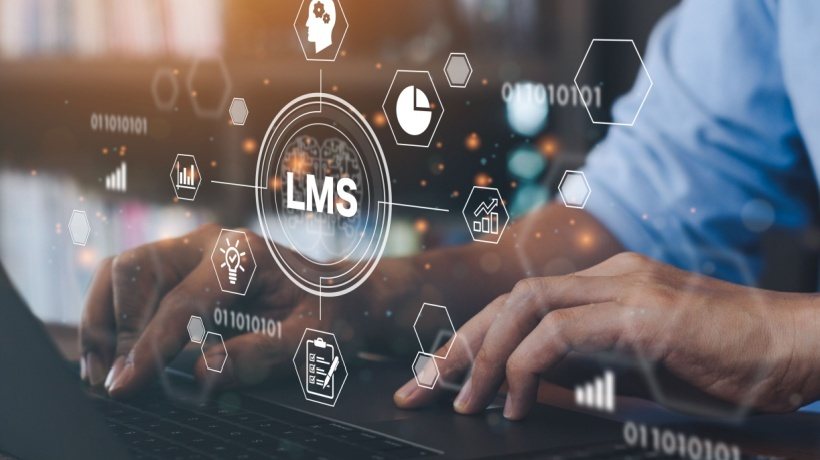Presenting A List Of Top LMS Requirements For Modern Online Training
You don’t.
When shopping for an LMS, look beyond bells and whistles and sleek presentations. Instead, zero in on the most critical Learning Management System requirements your organization truly needs and can use.
And focus on those features capable of bringing definable value, either in increased ROI or improved KPIs.
1. Robust Analytics And Report Generation
Robust analytics and report generation ranks as a must-have tool in any LMS. Within the LMS, an easily-accessed dashboard should let you pull down progress reports and other learner data. Also, it should include an application program interface (API) or webhook that leverages data to trigger an automatic task in the system.
This might mean giving a badge to a learner who has passed a specific milestone. Or, for example, consider an account that has been suspended because the customer, partner, or employee requires more training: Once the user has gone through the remedial instruction you determine, the API or webhook automatically reactivates the account.
Related reading: New Tech is Sparking a Bright Future for Learning & Development
Confirm also that the reporting function can be adapted to your specific requirements. The LMS will, of course, track how many users have completed the course and the time spent on a task.
But those statistics do not indicate real user engagement or whether the LMS has had any real impact on your business goals. So, you don’t want to lose track of the question of which success metric you should measure by utilizing the LMS.
Those metrics could be more sales volume, more applicants, or fewer support calls.Whichever measurement you set, the LMS must reflect that information in its assessment data as well instructional materials. Instead of relying on a standard reporting template, create your unique model within the LMS.
2. Course Authoring Capability
In addition to delivering and tracking the eLearning program, an LMS also creates and hosts the instructional content.
Many modern LMSs, like Northpass, contain course authoring tools. This permits your organization to create content-rich text activities, audio, videos, visuals—within the LMS itself. Without that capability, you would need to originate the content via a separate creation software, like Captivate or Articulate, and then import it into your LMS. An LMS with an embedded natural course authoring tool eliminates that step.
Another factor to consider when creating courses within an LMS is whether the software is SCORM 1.2 compliant. If so, the LMS will then accept all the instructional content in whatever format without any technical glitches.
3. Scalable Content Hosting
Similarly, as your LMS hosts your content, you’ll want the ability to make updates to the courses effortlessly. As your organization grows, you'll require an LMS that can welcome more learners and undergo any necessary upgrades as learning requirements shift to match organizational needs.
Further, if you have assets, objects, or activities embedded in several courses, the LMS should allow you to alter those elements in every place they are used rather than having to upload the changes multiple times in multiple areas.
4. Certifications
If your organization trains a great many external users—such as channel partners, resellers, customers, and service agents—certifications provide assurance that those extended enterprise groups are appropriately trained in your product.
Besides the training aspect, certifications elevate an organization’s brand value and build an ecosystem of users. For example, HubSpot Academy certifies inbound marketers, which serves the dual purpose of producing more expert marketers while also reinforcing HubSpot’s market-leading expertise in that area.
5. Integrations
Your LMS should never operate on an island. The ability to integrate with other SaaS software ranks as an essential requirement.
Like most modern organizations, you probably utilize a host of software programs, whether for CRM (SalesForce); employee onboarding (fountain), virtual classrooms (GoToTraining), HR (BambooHR), as well as Google Analytics. Through the API, have the vendor or your internal staff configure the LMS so it can exchange information—such as user records—with those programs.
6. Community And Collaboration
As they progress through the LMS, learners at specific points may want to reach out to internal experts or other users. This exchange of ideas and knowledge fosters a sense of community and keeps learners engaged in the process. eLearning works well when it is delivered in conjunction with peer-to-peer and other personal interactions.
A social networking platform, discussion boards, file sharing, and virtual chats enable learners to collaborate and share ideas.
These social learning communities also offer a window into how learners are progressing through the program: Are there areas where users need more help? Do they desire training in an area you hadn’t considered previously? Use that data to develop courses your users want. Or you can gather user-generated content to create more courses and information useful to your learners.
7. White-Labeling Vs. Branding
Most LMSs allow the organization to add its logo and brand name throughout the learning program. This feature lets you shape the look of the LMS somewhat.
This feature is often called white-labeling, but it would better be referred to as branding. There is more to white-labeling than merely changing the colors or adding a logo. Double check the LMS features list to ensure you get full control of the CSS/HTML editor for advanced customizations.
8. Mobile Capability
Today’s eLearning takes place on several devices: a desktop, tablet, or smartphone, and sometimes all 3. To optimize the learning experience, the content must adapt to any device.
A course authoring tool or LMS should enable the content to fit on any screen size, thereby delivering instruction in an easy to read format. It also means the learner can advance through the LMS from whichever device he or she chooses to use.
9. Customer Support And Success
Customer support entails more than having a help desk to call when glitches or other problems occur. Optimal customer support goes beyond just an 800 line for technical questions.
In that regard, you might want to know if the LMS handles support internally, or is it outsourced to a third-party? Do they assign an account representative who oversees the partnership from the first day and through every step of the process?
And the relationship between you and your LMS vendor must be a valid partnership, not one that ends after installation or deployment. Today’s customer support revolves around ongoing customer success.
Avoid an LMS vendor that offers only a boilerplate implementation solution. Partner with an LMS vendor that takes the time to know your business challenges and how the LMS can overcome those obstacles.The LMS in-house experts should understand your instructional needs so they can make recommendations based on your unique case.
This leads to customer support that is proactive, not reactive, and an association based on ensuring your success.
10. The Key Learning Management System Requirement: Supporting Your Mission And Culture
Perhaps the most critical element of an LMS is whether it supports your organization's mission and culture. So ask yourself these questions:
- Are we a fast-moving, innovative company whose training needs change quickly? If so, is the LMS agile enough to pivot with those rapid shifts?
- What do we want to use the LMS for?
- Do we require an LMS solely for skills building or dispensing technical know-how? Or, do we envision the LMS as a platform to build the overall industry expertise of our customers, channel partners workforce?
- Is the LMS more about supporting our brand values?
Lastly, since we live in an era that places a premium on User Experience (UX), find an LMS that supports a terrific UX for your users. There’s no better way to show how valued your users are to you than by providing them with a smooth UX as they progress through the LMS—especially onboarding. Plus, great UX keeps learners engaged.
As you review your LMS requirements and start comparing vendor partners, it is easy to be dazzled by a lengthy list ofoptions—they all sound so appealing. But to pick the right LMS for your needs, remember to let the purchase be guided by the features and requirements most valuable to your organization.
To get started comparing LMS platforms, download The Complete LMS Buying Guide For SMBs from eLearning Industry.










